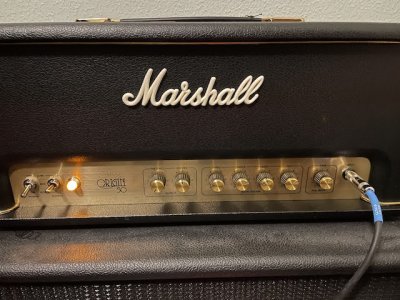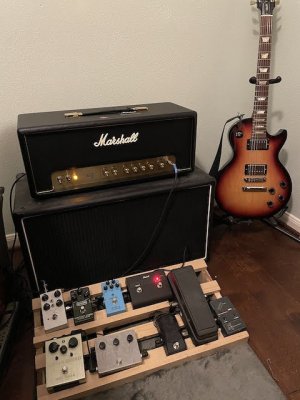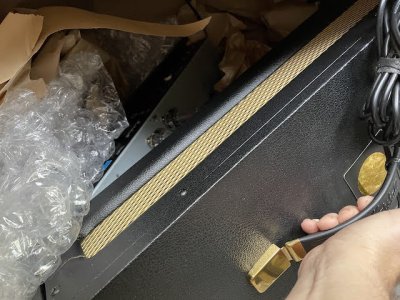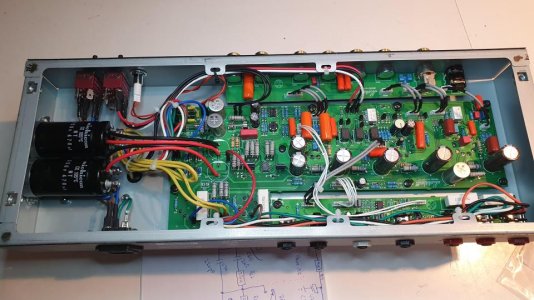misterwhizzy
Well-known member
After a three month wait, I finally got the Origin 50 head that's been on order to replace a badly damaged one I received in November. It's been here about a week, but I wanted some time to play through it before rendering any kind of judgment.

Classic Marshall look, classic Marshall sound. Dialing in everything at noon was ear-piercingly bright at first, and the gain knob at noon wasn't enough. I think the mid-output level is plenty to keep up with a drummer, and the only difference I notice is a bit less bass thump and a very slight volume drop. It's got that classic rock crunch all by itself, although it does take a bit of volume to get there.

Here's the rig now. The cabinet has a pair of WGS Green Berets, and the Les Paul has a stock Custom paired with an RCA3 59n.
I don't typically think of Marshalls as being pedal platforms, but this one definitely is. The Green Rhino is definitely able to push it into higher gain territory, say Rust In Peace-era Megadeth, and my Klone gives it the "more" of its natural breakup. Adding a Carbon Copy in the effects loop gives it more body. I prefer the pedals as boosts to the built-in gain boost, mainly because they're tweakable. The onboard boost doesn't add much gain except at lower gain levels.
All in all, I love it, and it rocks. Plus, it says "Marshall" on the front.

Classic Marshall look, classic Marshall sound. Dialing in everything at noon was ear-piercingly bright at first, and the gain knob at noon wasn't enough. I think the mid-output level is plenty to keep up with a drummer, and the only difference I notice is a bit less bass thump and a very slight volume drop. It's got that classic rock crunch all by itself, although it does take a bit of volume to get there.

Here's the rig now. The cabinet has a pair of WGS Green Berets, and the Les Paul has a stock Custom paired with an RCA3 59n.
I don't typically think of Marshalls as being pedal platforms, but this one definitely is. The Green Rhino is definitely able to push it into higher gain territory, say Rust In Peace-era Megadeth, and my Klone gives it the "more" of its natural breakup. Adding a Carbon Copy in the effects loop gives it more body. I prefer the pedals as boosts to the built-in gain boost, mainly because they're tweakable. The onboard boost doesn't add much gain except at lower gain levels.
All in all, I love it, and it rocks. Plus, it says "Marshall" on the front.


